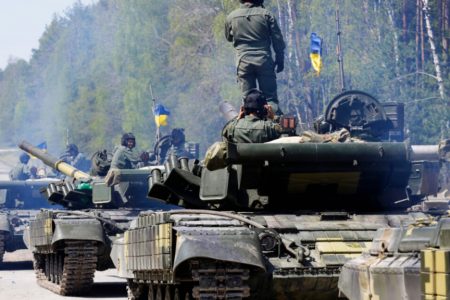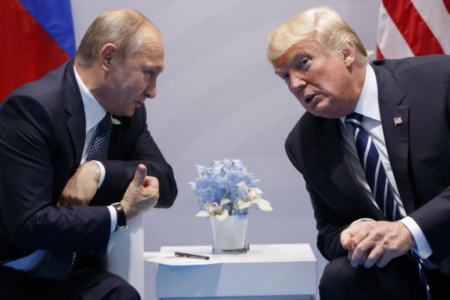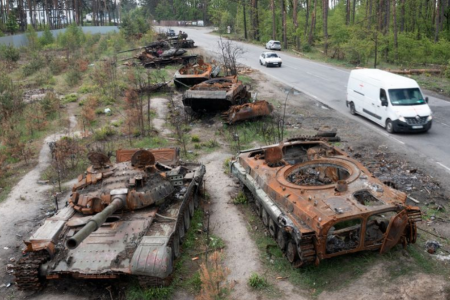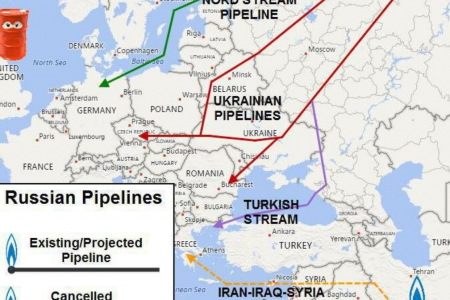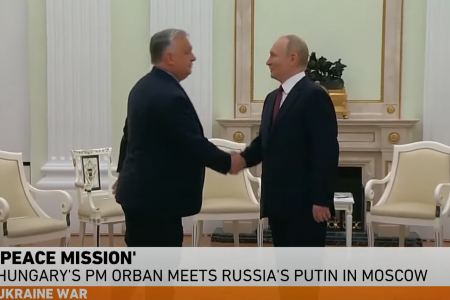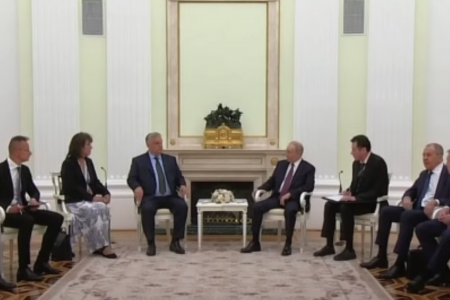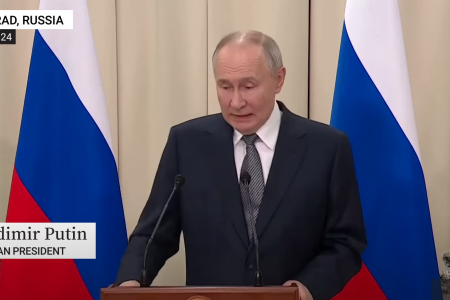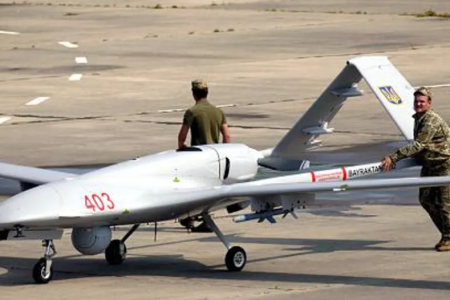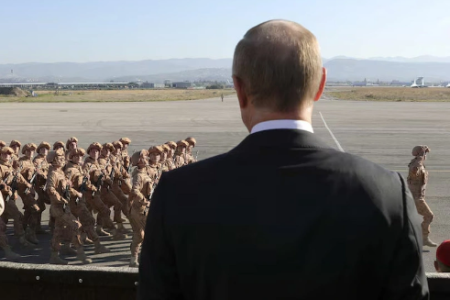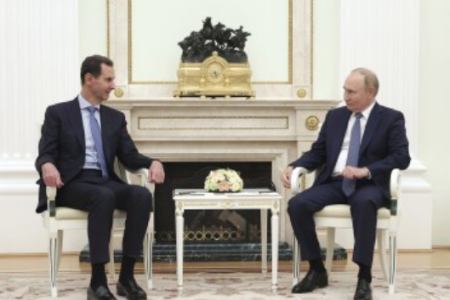
With a per capita income of $2,500, Laos is still one of the 47 least developed countries, according to the United Nations ranking. Because Laos is such a poor country, it is easy for China to expand its influence over a Communist “brother” of Vietnam.
As China expands its influence southward through its “One Belt, One Road” initiative, Vietnam tries to maintain its regional influence. In particular, Hanoi cannot compete with Beijing in terms of investment and loans, so it is very afraid that Laos will also follow the same path as Cambodia and enter deeper into China’s influence.
Vietnam’s influence
Because Laos used to stand side by side with its ally Vietnam in the war against the US, for a long time, the relationship between the two countries was very close, and Hanoi’s influence was great in all fields.
Like all former and current leaders of Laos, the new General Secretary of the Lao People’s Revolutionary Party and President Thongloun Sisoulith received training in Vietnam.
Although it still claims to follow the “three nos” defense policy: not to ally with any country, not to allow any country to set up military bases on its territory, not to rely on one country to fight another one but in fact, Vietnam still considers an alliance with Laos since the war until now, similar to the alliance between China and North Korea. For Vietnam, Laos is the most reliable friend. Laos is one of two countries (along with Cuba) that the Communist Party of Vietnam calls “brothers.”
China’s expansion of power
But this alliance is no longer as strong as it used to be, as Vietnam’s “brother” Laos now relies more and more on a larger “brother” China.
In an article published online on January 20, 2021, the Japanese newspaper Nikkei Asia recalled that until 2013, Vietnam was still the leading investor in Laos, with a total investment of up to $4.9 billion for the country in more than 420 projects since 1989. At that time, China only ranked 3rd, after Thailand. But by 2020, China has surpassed to become the largest investor in Laos, spending more than $12 billion on 785 projects, from the construction of special economic zones to the implementation of major infrastructure projects.
Also by 2020, China has become Laos’ largest donor, lending a total of $5.9 billion to Vientiane, out of a total of $12.6 billion of Laos’ external debt. By 2019, just before the outbreak of the Covid-19 pandemic, China had also jumped to become the second-largest trading partner of Laos, behind only Thailand.
Partly thanks to large-scale Chinese-funded projects such as hydroelectric dams and high-speed rail lines, Laos’ economy is growing at 6-7% annually.
Signs of tightening ties with Beijing
In such a context, it is not surprising that the new president of Laos immediately after taking office showed signs of deepening ties with China.
Nikkei Asia on April 7, 2021, said, after the Lao National Assembly officially elected General Secretary Thongloun Sisoulith as the country’s president in March, Vientiane appointed an elementary school friend of the Chinese president Xi Jinping to serve as a senior adviser to Mr. Thongloun. That is Ms. Khemmani Pholsena, 64 years old, former Minister of Industry and Trade, assigned the position of Minister in charge of head of the President Office.
According to expert Norihiko Yamada, Institute of Developed Economies, quoted by Nikkei Asia, Khemmani was appointed to such a high position because of her close relationship with President Xi Jinping. Arriving in Vientiane after attending the Asia-Pacific Economic Cooperation Forum in Vietnam, the Chinese president met privately with Khemmani and her family, whom he considers “a close friend.” Expert Yamada also predicts that Khemmani will accompany the President – General Secretary Thongloun on his visit to China.
Hanoi tries to hold Vientiane
Keeping Laos on its side is currently one of Vietnam’s foreign policy priorities. The problem is how to achieve that goal without engaging in a costly competition with China.
In an article (Vietnam’s tug of war with China over Laos) posted on the East Asia Forum website on May 12, 2021, author Nguyen Khac Giang, a Ph.D. student at Victoria University, Wellington, New Zealand, reiterated that in March, Vietnam announced it had gifted Laos a new National Assembly building worth $111 million. This action reflects Hanoi’s concern about Beijing’s growing influence over Vietnam’s closest ally.
According to author Nguyen Khac Giang, Vietnam’s geopolitical survival also depends on its relations with Laos, especially since China has been able to draw Cambodia into its orbit through its political support given to the government of Prime Minister Hun Sen.
However, as China’s image in the region grew, disagreements arose between Vientiane and Hanoi. Laos has the ambition to become “Asia’s generator” so it has built many hydroelectric dams on the Mekong River, many of which are funded by Chinese loans. Vietnam still opposes the construction of those dams because it wants to protect the Mekong Delta.
Hanoi also often brings the issue of the South China Sea to the table in ASEAN meetings, but Laos does not want to bring up the issue for fear of offending its Chinese creditor.
The “One Belt, One Road” initiative initiated by President Xi Jinping was warmly received in Vientiane, but Hanoi was cold. Some Vietnamese scholars fear that projects under that initiative, including the Kunming-Singapore railway, which crosses Laos, are aimed at isolating Vietnam from the region.
Vietnam still has many cards
But according to author Nguyen Khac Giang, Hanoi still has some strengths compared to China. Firstly, relations between Vietnam and Laos are based on close political ties developed over 40 years, as well as extensive economic and cultural ties between the two countries.
Vietnamese companies have successfully operated in Laos for decades, especially in the southern provinces of Savannakhet and Attapeu. Daily economic activities between the two countries are virtually barrier-free and many Vietnamese have taken this opportunity to immigrate to Laos, working in a variety of jobs, from small shop owners to construction workers.
Second, Laos also has a strategic interest in maintaining a warm relationship with Vietnam. Laos is a landlocked country, so Vietnam is the best gateway for Laos to access the sea for trade. Infrastructure projects to connect Laos with key economic centers of Vietnam, including the Vientiane railway project to the deep-water port of Vung Ang in central Vietnam, are under consideration.
According to observers quoted by Voice of America on April 23, 2021, this year, Laos has received many requests for aid and investment from the governments of Vietnam, Japan, and Thailand. trying to lessen China’s influence over this poor country.
As for Vietnam, according to Nhan Dan, the mouthpiece of the Communist Party of Vietnam has set out a cooperation strategy for 2021-2030 and a five-year cooperation agreement with Laos. Vietnam also supported Laos in the fight against Covid-19 and 1,000 scholarships for Laos last year.
Vietnam can also exploit the fear of a “Chinese debt trap” among the leadership in Vientiane today. According to the Nikkei Asia daily on March 23, 21, in addition to reviving the economy heavily affected by the Covid-19 epidemic, one of the current challenges for the new President Thongloun is to deal with the financial problems. China’s debt is increasingly weighing on Laos.
Laos tries to keep the balance
In that context, according to Nikkei Asia in an online article on January 20, the leaders of the Vientiane government must also try to maintain a balance in diplomatic relations with Vietnam and China. When he took over as general secretary of the Lao People’s Revolutionary Party in January, former prime minister Thongloun Sisoulith had to prove he remained loyal to traditional ally Hanoi, despite his country, both poor and heavily indebted, is under the growing influence of Beijing.
But according to Nikkei Asia, proving that is not easy because it was during Mr. Thongloun’s tenure as prime minister that China overtook Vietnam to take the position of the top investor and top donor of the country. Laos, at the same time rising to become its largest trading partner, is only trailed by Thailand.
In fact, according to Japanese scholar Norihiko Yamada, who has worked with the Lao government, as quoted by Nikkei Asia, the changes mentioned above and in general and Vientiane’s tightening ties with Beijing are not necessarily unpleasant for Hanoi. As noted by Mr. Yamada, the leaders of Laos are very interested in balancing relations with Vietnam and China and so far they have not embarrassed Vietnam.
This is also the comment of Supalak Ganjanakhundee, a Bangkok-based Southeast Asia analyst and Laos watcher. “Many leaders and officials I have talked to over the years have said that they see China as a model of development, even though they are trained and educated in Vietnam.”
Thoibao.de (Translated)



